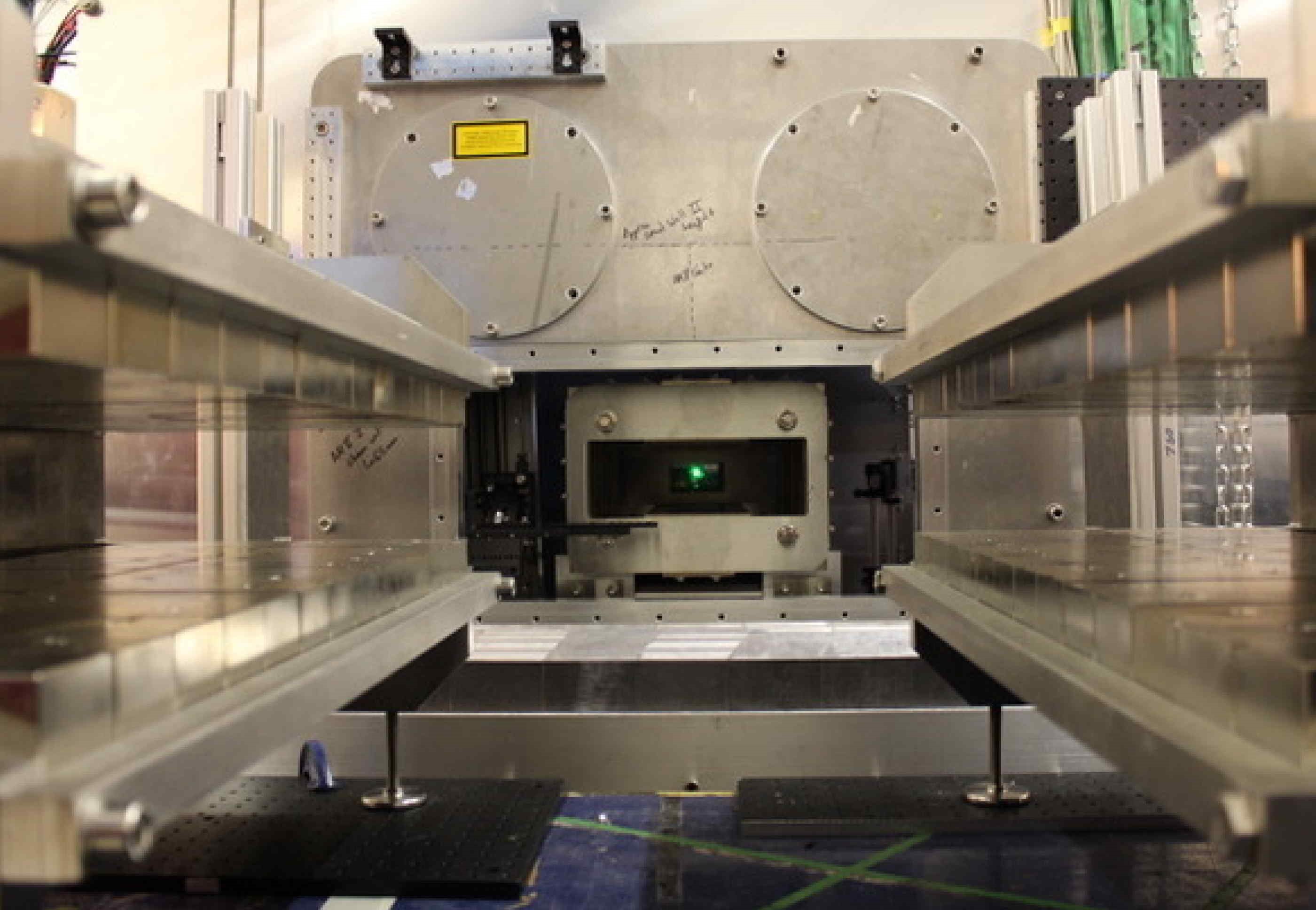
The theory, called the Breit-Wheeler process, dictates that it should be possible to turn light into matter by colliding two photons together to create an electron and a positron – a process that, if you saw it, you would be looking into 'the first 100 seconds of the universe'[1] and the mysterious inner workings of Gamma-ray bursts.
However, past attempts have not succeeded without the addition of other high-energy particles.
In 2014 Steve Rose from Imperial came up with a way of testing the theory that did not rely on these added extras. A team including physicists from Imperial, Jena and Queen's University Belfast later conducted experiments on Gemini at the CLF in 2018. Last week, their paper was published sharing the experimental set-up.
One of the biggest challenges is the difficulty of perfectly colliding two photons which have enough energy together. It is much like trying to get two bullets to collide mid-air. The experimental team created a set-up that may ease this issue by firing a collimated beam of very high-energy photons through the cloud of x ray photons emitted by a hot plasma and capturing any charged particles produced in the collision using a highly specialised detector. The team hope that this method could pave the way to observing the Breit-Wheeler process using only photons.
Imperial physicist Dr Brendan Kettle said, “We are very excited about the novel opportunities that this laser-plasma based photon-photon platform will provide. Many fundamental QED (Quantum Electrodynamic) processes have yet to be witnessed in the laboratory, but play key roles in cosmology and various astrophysical phenomena. The described platform will allow the measurement of linear Breit-Wheeler pair creation, a process which for example has recently been questioned concerning its role in the opacity of the universe to high energy photons. Future extensions of the platform could allow investigation of other important effects such as the non-linear Breit-Wheeler process and photo-photon scattering."
The team are still analysing data from the experiment, and have in the meantime produced a paper describing the experimental setup with predictions on the signal level for future experiments or optimum conditions.
Prof Rajeev Pattathil, Gemini Group Leader, said, “It's quite gratifying to see that the Gemini facility is used to answer some of the most fundamental questions in cosmology. These experiments are inherently very complex; with its synchronised petawatt-class beamlines, Gemini is one of the few facilities where such experiments can be attempted."
To read the paper, click here.
